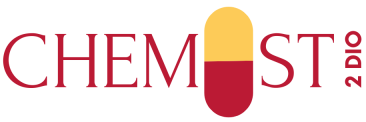In our fast-paced, ultra-competitive world, the quest for cognitive enhancement has become as universal as the pursuit of physical fitness. As we juggle work, family, and personal ambitions, the concept of ‘peak performance’ no longer belongs solely to Olympic athletes or chess grandmasters. Today, anyone with an ambition to excel, to learn faster and to work smarter, is turning to cognitive enhancers.
Enter Artvigil 150 mg— a name that’s been buzzing with fervor among the cognoscenti of cognitive enhancement. But what exactly is Artvigil 150 mg, and how can this enigmatic substance bolster our cognitive capacities? Are the benefits real, or are we looking at a modern-day version of snake oil?
Let’s embark on a journey to unravel the cognitive enhancement benefits of Artvigil 150 mg and explore the science behind its promises. Buckle up, because we are diving deep into the realms of nootropics and the potential it holds for unlocking the pathways to peak mental performance.
What Is Artvigil?
Artvigil is a brand name for Armodafinil, a wakefulness-promoting drug that’s considered a eugeroic — a kind of “stimulant” that doesn’t carry the same risks or dependency as traditional stimulants. Approved by the FDA for narcolepsy and shift work sleep disorder, Armodafinil is often prescribed off-label for its purported cognitive benefits.
In essence, Artvigil 150 mg stands at the intersection of wakefulness aids and brain boosters. It’s believed to offer clarity, alertness, and focus without the jittery side effects commonly associated with caffeine or amphetamines. For those looking to enhance their cognitive abilities, Artvigil offers the seductive promise of mental acuity without the fear of a ‘crash.’
Navigating the Regulatory Waters
Artvigil’s position in the legal and ethical landscape is a complex one. While it is officially a prescription drug, the off-label usage for enhancing cognitive functions introduces a gray area. The ethics of using prescription drugs for enhancement are widely debated, as is the morality of the providers who cater to this demand.
From a legal standpoint, the use of Artvigil without a prescription can not only be difficult but also risky. It’s important to note that the regulations surrounding medications designed for specific conditions exist for a reason. Without proper clinical oversight, individuals using Artvigil for enhancement could be doing so in an uninformed and unsafe manner.
The Science of Cognitive Enhancement
Cognitive enhancement through pharmaceuticals isn’t a recent phenomenon. Substances like caffeine and nicotine have been used for centuries to improve mental performance. Today, research into more potent, targeted cognitive enhancers is paving the way for more effective and nuanced interventions.
For Artvigil, scientific studies have shown promising results. It is believed that by modulating the brain’s dopamine levels, Artvigil can promote wakefulness and improve executive functions like working memory, decision-making, and attention. These benefits have been observed in patients with sleep disorders, leading to the question of whether similar benefits could be harnessed for the healthy brain.
Clinical Studies and Evidence
The body of research supporting the cognitive enhancement effects of Artvigil, while growing, is not yet comprehensive. Early studies indicated its potential for improving reaction time, executive function, and attention. Other areas of interest include its ability to enhance task enjoyment and energy, critical factors in the performance of complex cognitive tasks.
However, the research is not without its ambiguities; results have varied, and some studies have come under scrutiny for methodological issues. It’s a reminder that the journey to substantiating cognitive enhancements in a clinical setting is a complex one, fraught with confounding variables and individual differences.
Examining the Drawbacks and Risks
No discussion of cognitive enhancement through pharmacology is complete without a sober consideration of the risks. The potential for side effects, such as headaches, nausea, or insomnia, is a reality for any drug, Armodafinil included. More concerning is the potential for abuse and the long-term consequences of altering brain chemistry in pursuit of enhancement.
Moreover, the social implications of widespread cognitive enhancement are far-reaching. They raise questions about fairness, particularly in educational and professional settings. The playing field isn’t level when some have access to cognitive boosters that others do not.
It’s crucial to emphasize the importance of informed, responsible use when exploring cognitive enhancers. It’s not just a matter of legality or potential health risks — it’s about maintaining a balance between the drive for personal improvement and ethical integrity.
The Future of Nootropics
As technology accelerates the pace of our lives, the demand for cognitive enhancement will likely grow. Nootropics, or smart drugs, are only in their infancy when it comes to incorporating them into a mainstream routine. As our understanding of the brain deepens, and as we grapple with the moral and ethical considerations, the future holds the promise of even more powerful, safe, and effective ways to augment our cognitive faculties.
The quest for cognitive enhancement is, at its core, a reflection of an innate human desire to strive for more. Whether Artvigil and its counterparts become a footnote in the expanding catalog of cognitive enhancers, or whether they lead the charge into the era of enhancement, remains to be seen.
In the meantime, the most potent enhancer remains the remarkable human brain itself, capable of growth and change beyond our current pharmaceutical interventions. Whether through education, contemplative practices, lifestyle changes, or a combination of these, the path to cognitive enhancement may be more attainable — and more sustainable — than we think.

